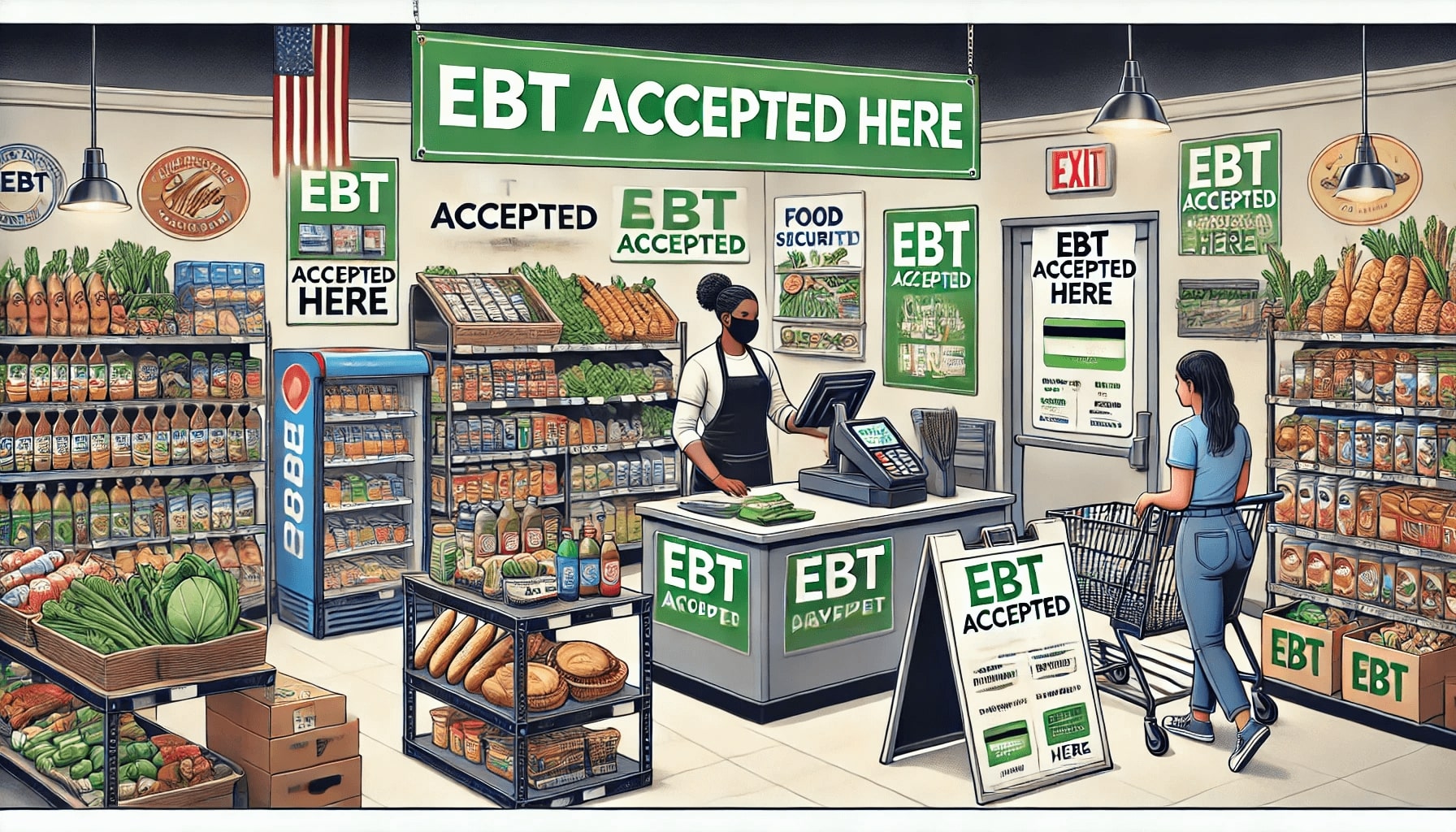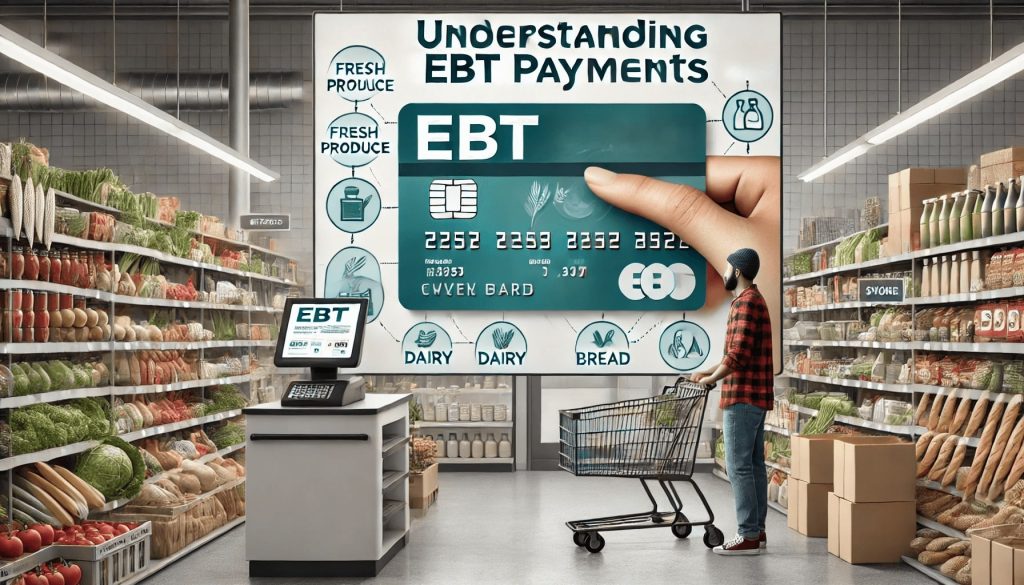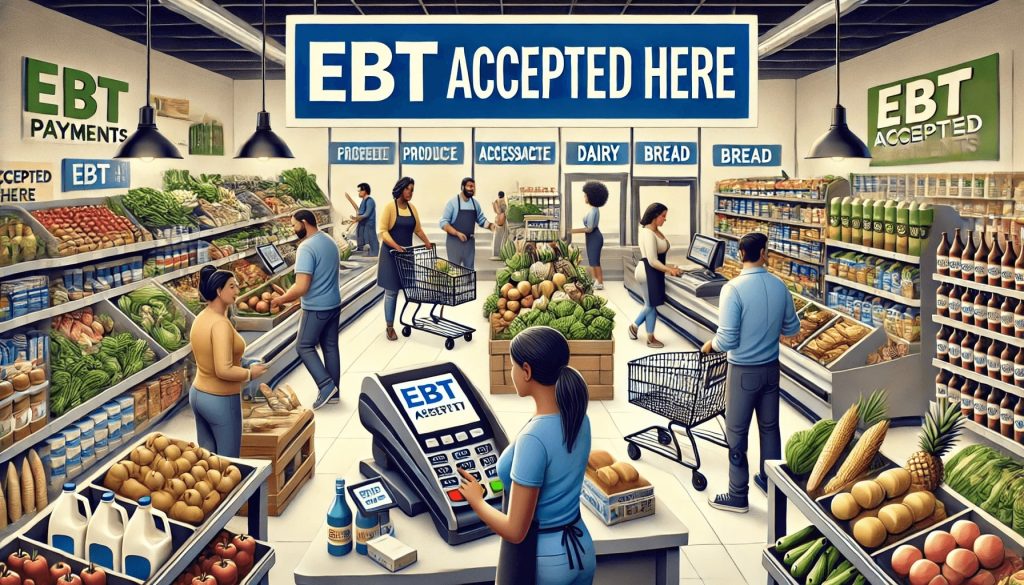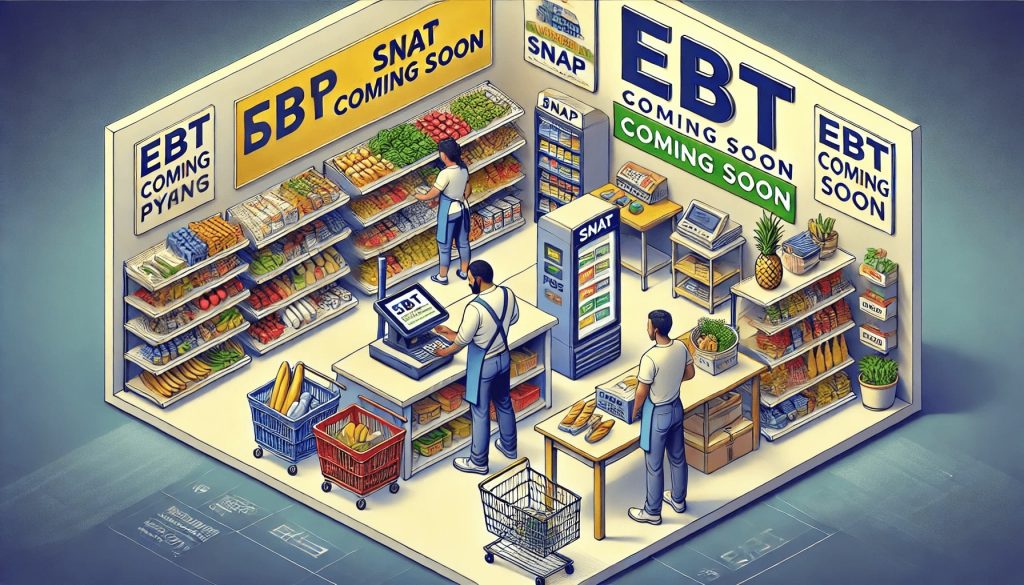
By Ethan Brooks November 25, 2024
In today’s retail landscape, offering flexible payment options is essential for attracting and retaining customers. Accepting EBT (Electronic Benefit Transfer) payments allows businesses to tap into a significant customer base while supporting low-income households through government assistance programs like the Supplemental Nutrition Assistance Program (SNAP). By integrating EBT payment processing, your store can expand its reach, boost sales, and contribute to food security in your community.
However, the process of setting up EBT payments requires navigating specific federal guidelines, meeting eligibility criteria, and equipping your store with the necessary technology. This comprehensive guide provides detailed insights on how to start accepting EBT payments in your store, covering everything from understanding EBT to applying for authorization, setting up equipment, promoting your new payment option, and ensuring compliance.
Understanding EBT Payments

What Are EBT Payments?
EBT, or Electronic Benefit Transfer, is a digital system that allows government assistance recipients to access their benefits using a plastic card similar to a debit card. This system primarily serves programs such as SNAP, which provides funds to low-income households to purchase essential food items.
EBT payments enable beneficiaries to buy approved items at participating retailers. Unlike traditional forms of assistance, such as paper food stamps, EBT cards streamline the process for both recipients and businesses, reducing fraud and making transactions quicker and more secure.
Programs Supported by EBT
The two main programs utilizing EBT are:
- SNAP (Supplemental Nutrition Assistance Program): Provides funds for purchasing food items necessary for a healthy diet. SNAP benefits can be used for fruits, vegetables, meat, dairy, and other essentials.
- WIC (Women, Infants, and Children): Offers supplemental assistance for pregnant women, breastfeeding mothers, and young children, focusing on specific nutritional needs like baby formula and cereals.
Understanding these programs helps you align your inventory to meet customer needs effectively.
How EBT Works
When an EBT cardholder shops at your store:
- They select eligible items as per the SNAP or WIC guidelines.
- At checkout, the EBT card is swiped or inserted into a compatible point-of-sale (POS) system.
- The system verifies available benefits in real-time, and the transaction is approved if funds are sufficient.
This seamless process benefits both customers and retailers by ensuring accurate transactions.
Why Accept EBT Payments in Your Store?

Advantages for Retailers
Accepting EBT payments is more than a community service; it’s a strategic business decision with several advantages:
- Expanded Customer Base: Over 40 million Americans rely on SNAP benefits, representing a vast customer segment. By accepting EBT, your store becomes accessible to this demographic.
- Increased Revenue: SNAP beneficiaries spend their monthly benefits consistently, ensuring steady sales for your store.
- Improved Reputation: Supporting government assistance programs builds goodwill and positions your store as a socially responsible business.
Meeting Community Needs
Accepting EBT payments directly contributes to food security in your community. For many families, having a local store that accepts EBT is a lifeline. This not only enhances your store’s image but also fosters long-term loyalty among customers who rely on these programs.
Competitive Advantage
In areas where not all retailers accept EBT, offering this payment option sets your store apart. It attracts customers who might otherwise shop elsewhere, giving you a competitive edge in the local market.
Preparing Your Store for EBT Payments

Meeting Eligibility Requirements
To accept EBT payments, your store must meet specific criteria set by the USDA (United States Department of Agriculture):
- Stocking SNAP-Eligible Items: Your inventory must include staple foods like fruits, vegetables, dairy products, bread, and meat.
- Sales Composition: At least 50% of your total sales should consist of eligible food items.
These requirements ensure that EBT benefits are spent on essential groceries rather than non-qualifying products.
Evaluating Your Inventory
Conduct a thorough review of your inventory to confirm compliance with SNAP guidelines. If necessary, adjust your product offerings to include more staple items. For example, add fresh produce or canned goods if your current inventory leans heavily on non-food items.
Staff Training
Preparing your staff is crucial for a smooth transition to accepting EBT payments. Employees should be trained on:
- Handling EBT transactions.
- Recognizing eligible and non-eligible items.
- Providing respectful and efficient service to EBT cardholders.
A well-trained team ensures that customers feel welcomed and supported during their shopping experience.
Applying for EBT Authorization
Steps to Apply
The USDA’s Food and Nutrition Service (FNS) manages the authorization process for retailers to accept EBT payments. Here’s how to apply:
- Create an FNS Account: Visit the USDA website and register for an account to access the retailer application portal.
- Submit Required Documentation: Provide details about your business, including:
- Tax identification number.
- Business licenses.
- Ownership details.
- Photos of your store and inventory.
- Complete the Application: Fill out the online application form, ensuring all information is accurate and complete.
- Await Approval: The FNS reviews your application, which typically takes 45–60 days. They may request additional documentation during this period.
Common Challenges During Application
Retailers often face challenges such as incomplete documentation or misunderstanding eligibility criteria. To avoid delays:
- Double-check all submissions for accuracy.
- Review USDA guidelines thoroughly before applying.
- Respond promptly to any USDA requests for additional information.
After Approval
Once approved, you will receive an FNS authorization number. This enables you to legally process EBT transactions. The next step involves setting up the necessary technology to handle these payments.
Setting Up EBT Payment Systems
Choosing the Right POS System
Your POS system must be compatible with EBT payments. Many modern systems include this functionality, but it’s essential to verify compatibility before purchasing or upgrading.
Features to Look For
When selecting a POS system, consider the following features:
- EBT Compatibility: Ensure the system can process SNAP and WIC transactions.
- Real-Time Processing: The ability to verify card balances and approve transactions instantly.
- Integration: Seamless compatibility with existing inventory and accounting systems.
Installation and Testing
Once your POS system is installed:
- Conduct extensive testing to ensure accuracy in processing EBT transactions.
- Train staff on using the new system, focusing on common scenarios such as balance checks and declined transactions.
Promoting EBT Acceptance in Your Store
Raising Awareness
Letting your community know that your store accepts EBT payments is crucial for attracting customers. Strategies include:
- In-Store Signage: Display “EBT Accepted Here” signs at entrances and checkout areas.
- Local Advertising: Use local newspapers, radio, and social media to promote your EBT acceptance.
- Community Partnerships: Collaborate with local food banks or community organizations to spread the word.
Enhancing the Customer Experience
Beyond promotion, focus on creating a welcoming environment for EBT users. Ensure your staff is respectful and knowledgeable, and provide clear communication about eligible items and transaction processes.
Maintaining Compliance with SNAP Guidelines
Periodic Audits
The USDA conducts regular audits of EBT-authorized retailers to ensure compliance. These audits assess:
- Inventory levels of SNAP-eligible items.
- Accuracy of EBT transaction records.
- Adherence to program rules, such as not allowing non-eligible items to be purchased with EBT.
Record-Keeping Practices
Maintain detailed records of your EBT transactions, including:
- Sales data.
- Inventory adjustments.
- Customer receipts.
Proper documentation helps you stay organized and ensures compliance during audits.
FAQs
Q.1 What types of items can customers purchase with EBT?
EBT benefits can be used for staple food items like fruits, vegetables, dairy, bread, and meat. Non-food items, alcohol, vitamins, and hot prepared foods are not eligible.
Q.2 Do I need special equipment to accept EBT payments?
Yes, you’ll need a POS system compatible with EBT transactions. Many systems offer built-in EBT functionality.
Q.3 How long does the application process take?
The USDA typically takes 45–60 days to review and approve applications, provided all documentation is accurate and complete.
Q.4 Can I charge fees for EBT transactions?
No, retailers cannot charge additional fees for EBT transactions. Doing so violates federal guidelines.
Conclusion
Accepting EBT payments is a powerful way to grow your business while supporting your community. By understanding the application process, preparing your store, and equipping your business with the right technology, you can seamlessly integrate this payment option into your operations.
This not only enhances your revenue potential but also positions your store as a vital resource for local families. With careful planning and compliance, you can make EBT payments a valuable addition to your business, ensuring both customer satisfaction and long-term success.